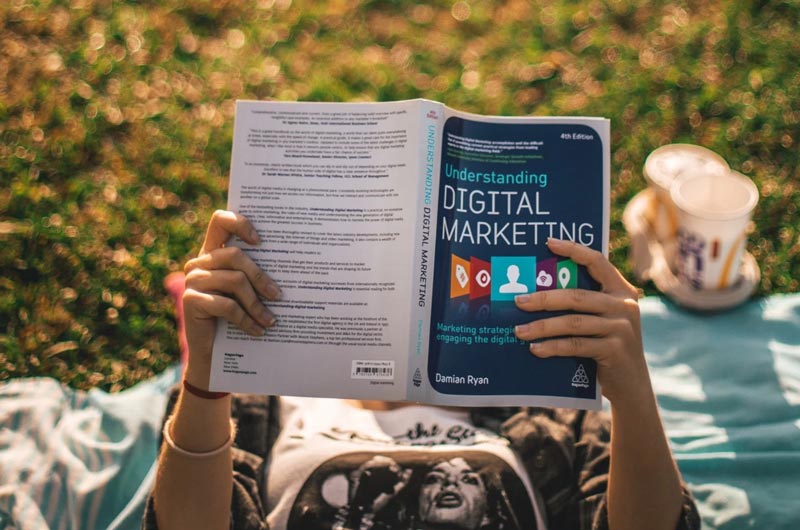Navigating the world of digital marketing is quite a journey. Every day it feels like there’s something new to learn about how you should promote your business online. Well, we’re here to break it down for you. Us being the marketing geeks that we are, we are constantly educating ourselves with the latest in digital marketing trends and terminology to ensure our clients are making the most of their digital presence. To help you, our clients learn alongside us, we’ve come up with a little cheat sheet to help break down some of the more complicated terms in 2021, that you should know as a business owner.
1. PPC
Pay per click or PPC is an advertising model in which an advertiser pays each time their online ad is clicked on. There are different types of PPC ads, but the most common example is a paid search ad you might see on Google. These ads appear when you use a search engine such as Google, more specifically when you are looking for a specific product or service. The ads are targeted to appear when certain keywords are typed in to generate traffic to a website or to generate a lead. You are only charged for pay per click ads when someone clicks on your ads – hence the clever name.
2. CTR
Clickthrough rate or CTR involves a little bit of math. It is calculated by taking the number of clicks your digital ad receives and divides it by the number of times your ad is shown. Or clicks ÷ impressions = CTR. A high CTR shows that your ad or listing was helpful and relevant to those who saw it. The higher the CTR the more people clicked your ad. The lower the CTR the less helpful or relevant your ad was to the searcher, therefore fewer people clicked on your ad. The CTR of a campaign is a benchmark measurement to gauge results or success.
3. CPC
Tying back to PPC, cost per click or CPC is the amount the advertiser pays the publisher each time their ad is clicked on. It is used to determine the costs of showing users ads on search engines or other pay per click advertising platforms. Understanding CPC is important when it comes to choosing bidding strategies and conversion bidding types to maximize clicks on an ad. Your CPC is also important to look at when trying to figure out how much you should be spending on pay per click advertising to increase your results, and to see whether your results achieved make sense to continue with.
For example, if you sell a product that costs $5 each, and you are using pay per click advertising to get people to buy the product and you’re CPC is $8 per click — pay per click advertising may not be the best option for your advertising strategy. However, if you sell a service that costs $150 per hour, and on average a customer purchases 2 hours of time each time they buy your service, and your CPC is $5 per click, pay per click advertising is a very good strategy for you to use.
4. Impressions
Impressions is just another way of saying views. And, impressions are counted either on your ad or on your website. 1 impression = 1 view, whether it be of your ad or your website. Impression counts measure how many views a piece of content received, such as a web page or advertisement. It doesn’t calculate how many times an ad was clicked on, but rather how many people saw your ad in a specific period of time.
5. Bounce Rate
A bounce rate measures the number of people who visit your website but do nothing when they visit that page on your site, and don’t go any further than the original page they landed on. So, if someone is directed to a page on your website and they don’t click on a menu item or click on a prompt on that page (such as a ‘sign up’ or ‘learn more’ section), and they don’t click to another page on your website for more information, Google Analytics doesn’t receive a trigger that there was a highly interested visitor. Bounce rate is another way of saying someone visited your website, but it was a single-page visit. This rate is good for indicating the quality of a webpage, the quality of the content found on that website, and the level of interest site visitors showed.
6. Organic Reach
Organic reach is the number of people who have seen one of your social media posts without the use of paid distribution or advertising. In other words, it’s a metric used in social media marketing that shows the number of unique accounts that saw a post or a piece of content on your social media pages without any paid prompts. The more organic reach you have, the more engagement you can receive without having to pay for that attention.
7. Paid Reach
Opposite to organic reach, paid reach is when you post something on social media and pay money to have the post appear in social media feeds of people you choose to target as opposed to just the people who follow your account already. You can pay to promote a post to different groups of people based on their location, age, gender, interests, and more. Paid and organic reach can cross paths as well. For example, you can pay to ‘boost’ an organic post so you can reach a wider audience. When you do this you’ll see how many people you reached organically of those that follow your social media page, and how many people you reached in addition to that which you paid for.
8. CPA
This is one of the most important metrics used in digital marketing and advertising overall. Cost per acquisition or CPA gives you an estimate on how much you paid to create new customers and can give you an idea on whether your advertising strategy needs to be adjusted or not to decrease your CPA and increase your campaign results, therefore, generating more profits for you.
9. Social Media Engagement
Engagement on social media is a measurement benchmark counting the number of times people or followers ‘engage’ with the content you post. This includes every time your posts are shared, liked, commented on, or a link to learn more is clicked. Engagement is a great way of measuring the success of specific content you post on your social media pages in terms of customer interest, however, it’s not necessarily a way to calculate sales. Just because someone liked a post, doesn’t mean they purchased it, or even would purchase it.
10. Owned vs Earned Media
Owned media is a channel you leverage and have control over. This can be your website, blog posts, annual reports you publish, email marketing lists, and so on. You control what is published and posted on each of these media platforms. On the other end of the spectrum, earned media is when your business is mentioned by others, such as customer reviews and recommendations on social media pages or other media platforms mentioning your business. In other words, earned media is voluntarily given by others without solicitation. Your social media pages and that following would be considered earned media because it’s possible that one day Facebook shuts down for good and you can no longer reach those followers you built up.
Did we miss a definition you wanted to see? Need some clarification on what a term means or how to manage your marketing online? We can help with that. At 3SIXTY Marketing Solutions, we are extremely educated on digital media and many other types of advertising too. We would say we’re experts but, there’s always something new to learn, a true expert doesn’t really exist because things move and evolve so quickly. From getting your business set up online to running your social media and digital ad campaigns, we’re there every step of the way to help you maximize your results and profitability. If you have any questions or you’re ready to take your digital marketing strategies to the next level this year, give us a call today at (705) 252-4180. All you have to do is pick up the phone, and we can handle the rest.




